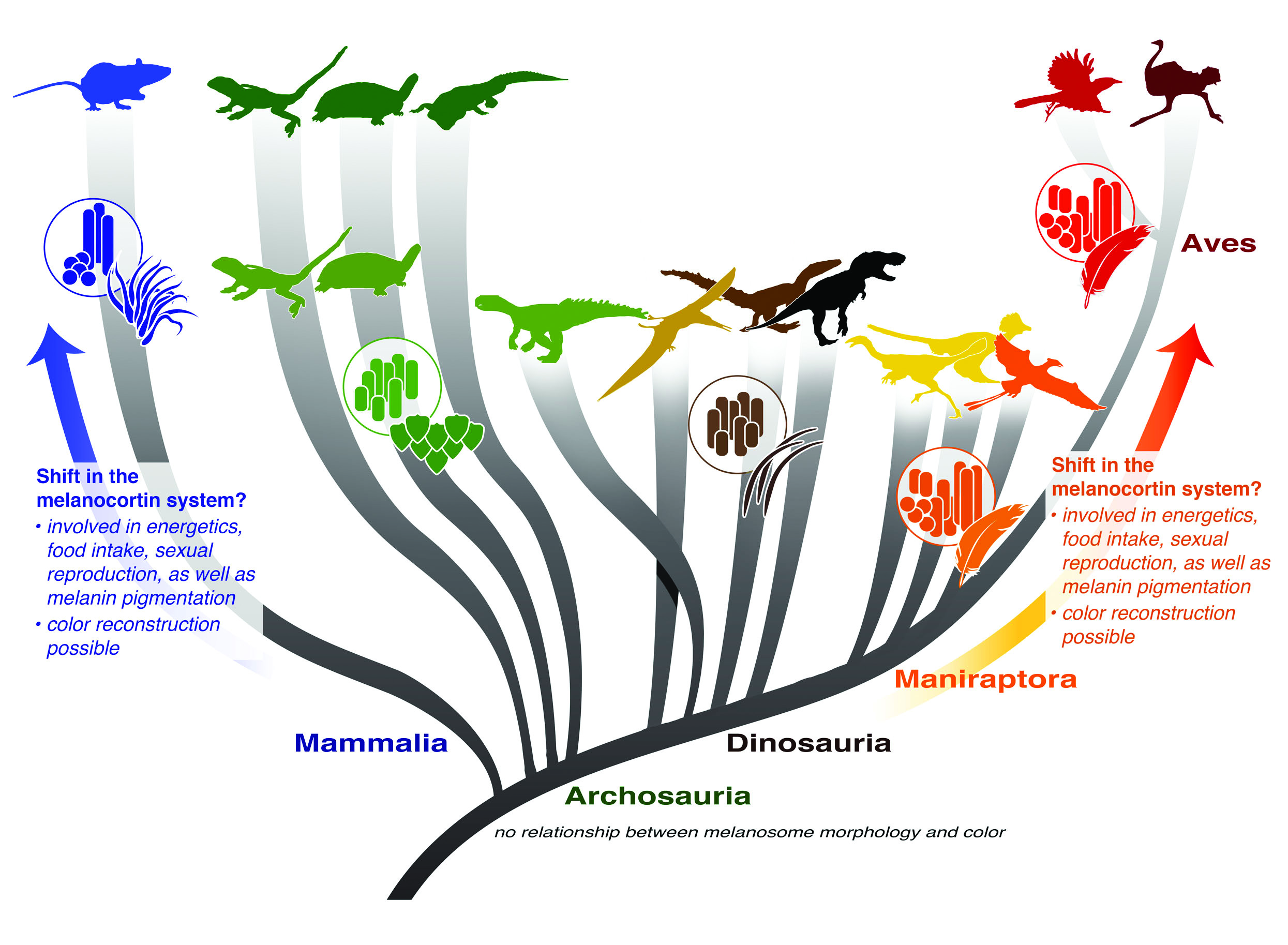Flying Colors
October 21, 2014
New research that revises recently established conventions allowing scientists to decipher color in dinosaurs may also provide a tool for understanding the evolutionary emergence of flight and changes in dinosaur physiology prior to the origin of flight.
In a survey comparing the hair, skin, fuzz and feathers of living terrestrial vertebrates and fossil specimens, a research team from the University of Texas at Austin, the University of Akron, the China University of Geosciences and four other Chinese institutions found evidence for evolutionary shifts in the relationship between color and the shape of pigment-containing organelles known as melanosomes. The findings were reported in the March 20, 2014, edition of Nature.
At the same time, the team discovered that endothermic (commonly known as warm-blooded) birds and mammals shared a pattern of diverse melanosome shapes distinct from living ectothermic (cold-blooded) animals such as lizards, turtles and crocodiles.
Ancient maniraptoran dinosaurs and paravians also showed diverse melanosome shapes and sizes, in the pattern of living mammals and birds. (Diversity in the shape and size of melanosomes allows scientists to decipher color.) The evolution of diverse melanosomes in these organisms raises the possibility that melanosome shape and size could yield insights into dinosaur physiology.
Co-authors include Julia Clarke from the Department of Geological Sciences at the Jackson School of Geosciences, Quanguo Li of the China University of Geosciences, Ke-Qin Gao of Peking University, Chang-Fu Zhou of Shenyang Normal University, Qingjin Meng of the Beijing Museum of Natural History, Daliang Li of the Museum of China University of Geosciences and Liliana D’Alba of the University of Akron.

